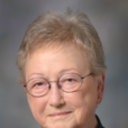Long-term medical effects of childhood and adolescent rhabdomyosarcoma: a report from the childhood cancer survivor study.
키워드
요약
BACKGROUND
This study was conducted to evaluate the incidence of adverse medical conditions and to assess the risk of developing these conditions in a cohort of long-term survivors of rhabdomyosarcoma (RMS) diagnosed before age 21.
METHODS
Using data from the Childhood Cancer Survivor Study (CCSS), we evaluated the incidence of self-reported adverse medical conditions for 606 RMS survivors and 3,701 siblings of cancer survivors. Cancer and treatment data abstracted from medical records were used to evaluate the effects of primary tumor site and combined modality therapy on the risk of developing sequelae in survivors.
RESULTS
The relative risk (RR) for developing sequelae among survivors compared with siblings was greatest within 5 years after diagnosis. RR was elevated more than 5 years after diagnosis for several conditions (RR, 95% CI) as follows: eye impairment (cataract: 7.4, 2.9-18.9; visual disturbances: 3.2, 2.0-5.1; very dry eyes: 2.0, 1.2-3.3), endocrine impairment (growth hormone deficiency: 83.9, 33.0-213.6; hypothyroidism: 6.9, 4.1-11.3; need for medications to induce puberty: 90.4, 30.2-270.5), cardiopulmonary impairment (congestive heart failure: 43.0, 12.7-145.5; angina-like symptoms: 2.0, 1.3-2.9), neurosensory impairment (legal blindness: 9.8, 4.8-20.0; abnormal sensations: 1.5, 1.0-2.2), and neuromotor impairment (repeated seizures: 2.3, 1.2-4.4; motor problems: 3.7, 2.2-6.4; problems chewing or swallowing: 3.8, 1.9-7.5).
CONCLUSIONS
Survivors are at risk for developing sequelae many years after their initial diagnosis and treatment. Continued medical surveillance is necessary to ensure the long-term health and well-being of RMS survivors.


